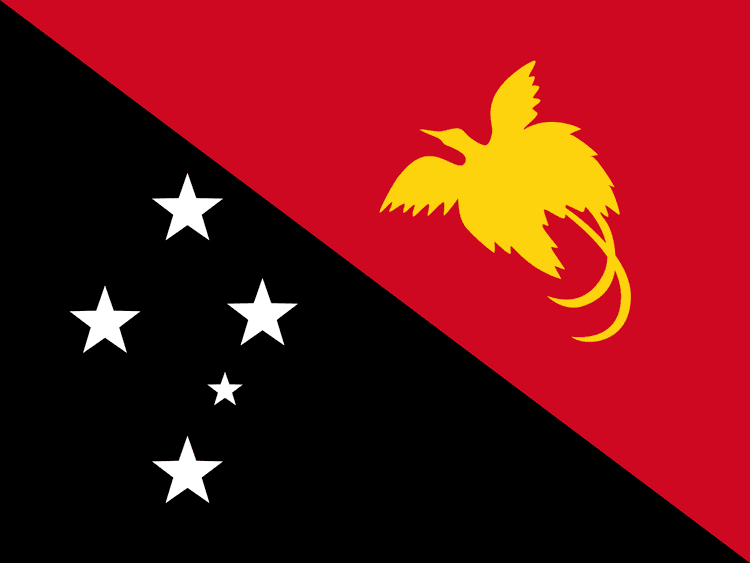 | ||
The following outline is provided as an overview of and topical guide to Papua New Guinea:
Contents
- Geography of Papua New Guinea
- Environment of Papua New Guinea
- Natural geographic features of Papua New Guinea
- Administrative divisions of Papua New Guinea
- Government and politics of Papua New Guinea
- Executive branch of the government of Papua New Guinea
- Legislative branch of the government of Papua New Guinea
- Judicial branch of the government of Papua New Guinea
- Foreign relations of Papua New Guinea
- International organization membership
- Law and order in Papua New Guinea
- Military of Papua New Guinea
- History of Papua New Guinea
- Culture of Papua New Guinea
- Art in Papua New Guinea
- Sports in Papua New Guinea
- Economy and infrastructure of Papua New Guinea
- Infrastructure of Papua New Guinea
- References
The Independent State of Papua New Guinea is a sovereign island nation of Oceania comprising the eastern half of the Island of New Guinea and numerous offshore islands in the western South Pacific Ocean. Papua New Guinea is located in a region defined since the early 19th century as Melanesia. Its capital, and one of its few major cities, is Port Moresby. It is one of the most diverse countries on Earth, with over 850 indigenous languages and at least as many traditional societies, out of a population of just under 6 million. It is also one of the most rural, with only 18 per cent of its people living in urban centres. The country is also one of the world's least explored, culturally and geographically, and many undiscovered species of plants and animals are thought to exist in the interior of Papua New Guinea.
The majority of the population live in traditional societies and practise subsistence-based agriculture. These societies and clans have some explicit acknowledgement within the nation's constitutional framework. The PNG Constitution (Preamble 5(4)) expresses the wish for traditional villages and communities to remain as viable units of Papua New Guinean society, and for active steps to be taken in their preservation. The PNG legislature has enacted various laws in which a type of tenure called "customary land title" is recognised, meaning that the traditional lands of the indigenous peoples have some legal basis to inalienable tenure. This customary land notionally covers most of the usable land in the country (some 97% of total land area); alienated land is either held privately under State Lease or is government land. Freehold Title (also known as fee simple) can only be held by Papua New Guinea citizens.
The country's geography is similarly diverse and, in places, extremely rugged. A spine of mountains runs the length of the island of New Guinea, forming a populous highlands region. Dense rainforests can be found in the lowland and coastal areas. This terrain has made it difficult for the country to develop transportation infrastructure. In some areas, planes are the only mode of transport. After being ruled by three external powers since 1884, Papua New Guinea gained its independence from Australia in 1975.
Geography of Papua New Guinea
Environment of Papua New Guinea
Natural geographic features of Papua New Guinea
Administrative divisions of Papua New Guinea
Provinces of Papua New Guinea
Districts of Papua New Guinea
Municipalities of Papua New Guinea
Government and politics of Papua New Guinea
Executive branch of the government of Papua New Guinea
Legislative branch of the government of Papua New Guinea
Judicial branch of the government of Papua New Guinea
Foreign relations of Papua New Guinea
International organization membership
The Independent State of Papua New Guinea is a member of:
